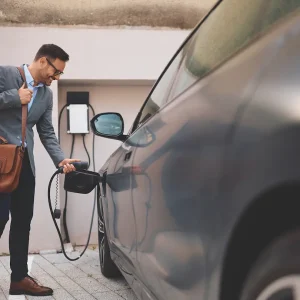Dash cam firm Nextbase has unveiled an updated range of products, featuring a new service it claims could be a must-have safety feature for fleets.
The company, which says it took a 79% share of the UK dash cam market in 2018, has introduced a new, second-generation camera portfolio.
Among the new features announced is an emergency SOS function – fitted to the three most expensive products in the five-camera range – which can automatically alert emergency services if the unit detects the driver is unresponsive following a crash.
Speaking at the launch of the new cameras, Nextbase director Richard Browning told Business Car he thought it was a feature fleet operators would not be able to overlook.
“I don’t know how companies, knowing this technology exists on top of a dash cam, could not put that in vehicles,” he said.
“If one of your employees has a serious accident and comes to greater harm because they are not responded to as quickly as they could be. I think they have a responsibility, if [employees] are employed largely to drive, to have this in the car.”
The system kicks in when the dash cam detects a major crash through its on-board g-sensor, at which point an audible alarm sounds on the driver’s smartphone, which connects to the camera when the driver enters the vehicle.
It allows 150 seconds for the alert to be cancelled, either manually by the driver or if the phone detects the driver is moving – perhaps walking around outside the vehicle with their phone in their pocket.
If the alert is not cancelled, the Nextbase App will automatically contact the ambulance service directly through BT, and can provide them with information such as the location of the crash, which way the car was heading, the make and model of the vehicle, the driver’s name and phone number, and important medical information – the driver can decide how much of this to provide when setting the system up.
Browning said: “The information [when entered] stays in the device, it doesn’t go to Nextbase or anywhere else.
“Being certified to send this information is incredibly rare. No other camera system can send straight through BT to ambulance control.”
Once contacted the emergency operator will then try to phone the driver, and deploy if there is no response.
Compared with the e-call feature fitted to new cars, Nextbase says its service offers more comprehensive information, and is also better at preventing false positives. This is because of the 150-second delay, and also because it cannot be manually triggered, and will not fire up for potentially minor incidents just because the airbag has deployed. It is free for the first year, after which there is a monthly charge.
Another potential attraction of the new Nextbase range for fleets is the incident aware feature. This works on higher-end models with Nextbase’s Autosync system, which after a crash immediately and automatically sends a 30-second lo-res, easily sharable clip to the driver’s smartphone.
The driver can predetermine a subsequent destination for this – such as a fleet manager’s email address – so that after a crash it only requires one-touch approval to be sent over, meaning the manager can have video footage of the incident within minutes of it happening. This footage can also be shared with insurers to begin the claims process straight away.
Another feature of higher-end models in the range is Amazon Alexa voice recognition, which allows the driver to take hands-free control of the camera, and also smartphone apps such as navigation and music services.
The new cameras also boast improved image quality, and there has been a 35% reduction in the physical size of the units.
Intelligent parking mode – which triggers the camera to record footage if the car is crashed into while parking – has also been made standard across the range.





